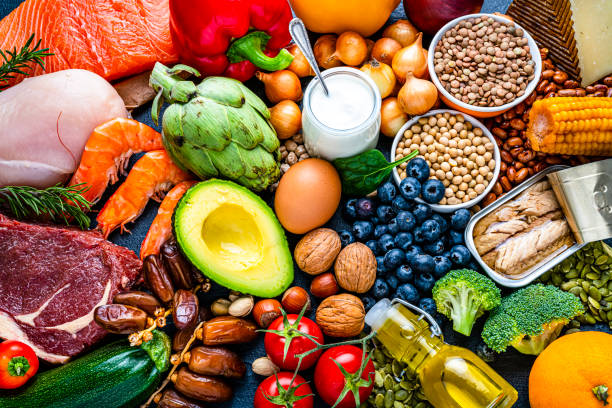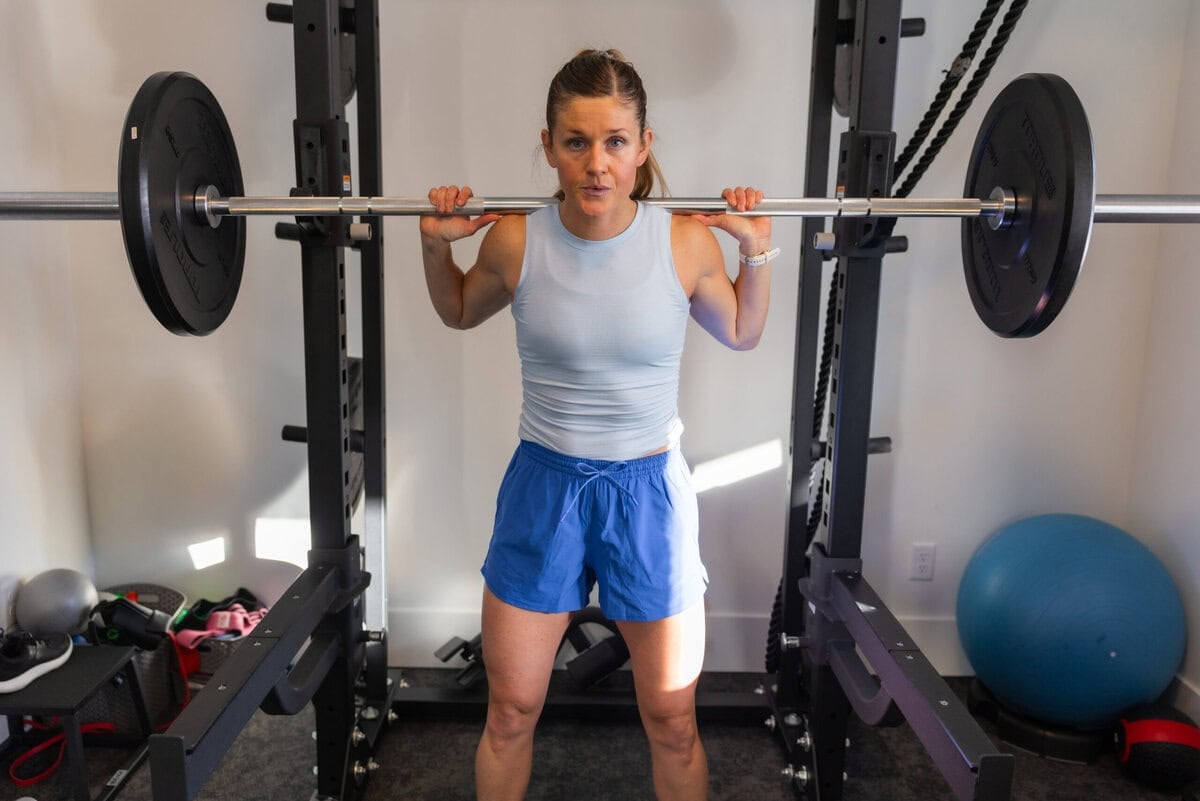The Engaging Introduction
In the midst of the fast pace of life and increasing daily demands, the search for quick and nutritious energy sources has become inevitable. Many find themselves reaching for snacks between main meals, but this behavior, despite its necessity, is often a double-edged sword. While snacks can be a powerful tool to support weight management goals and maintain energy levels, poor choices can undermine diet efforts and lead to an undesirable increase in calories and weight.
The Importance of Snacking in the Modern Era
Snacks are no longer just a "luxury" or a "passing craving satisfaction"; they have become a functional part of the modern diet. They act as a bridge between main meals, preventing the sharp drop in blood sugar that leads to fatigue and intense food cravings. In work or study environments, where tasks require continuous focus, healthy snacks provide the necessary fuel for the brain and body without causing the sluggishness associated with heavy meals.
Snacking and Weight Management: The Misconception and the Reality
There is a misconception that stopping snacking is the optimal way to lose weight. The scientific reality is quite different; consuming well-thought-out and nutritious snacks is actually a highly effective strategy for weight management. It helps in:
1. Regulating Blood Sugar: Maintaining stable blood sugar levels reduces excessive insulin secretion, which limits fat storage. 2. Preventing Overeating: When the time interval between meals is long, a person arrives at the next meal in a state of extreme hunger, causing them to overeat quickly and unconsciously. A healthy snack breaks this cycle. 3. Providing Nutrients: Snacking offers an opportunity to add more vitamins, minerals, and fiber to the daily diet.
The secret lies in quality and quantity. A healthy snack should be designed to enhance satiety with the fewest possible calories, which we will delve into in the following sections.
The Science Behind Smart Snacking
Choosing a snack should not be random; it should be based on a clear understanding of how nutritional components interact with the body, especially concerning satiety and metabolism.
The Three Components of Satiety
To achieve maximum satiety with minimum calories, a snack should focus on three main nutrients: protein, fiber, and healthy fats.
#### Protein: The Guardian of Muscle Mass and Satiety Protein is the absolute champion in the satiety equation. Its digestion requires more energy than carbohydrates and fats (a higher thermic effect of food), and more importantly, it affects satiety hormones like Peptide YY and Glucagon-like Peptide-1 (GLP-1), sending strong signals to the brain that you are full. Maintaining protein intake is also essential for protecting muscle mass during weight loss.
#### Fiber: The Key to Slow Digestion Fiber, especially soluble fiber, comes second after protein. Fiber is not digested but passes through the digestive system, increasing the volume of stomach and intestinal contents. This volume contributes to the feeling of fullness. Fiber also slows the rate of stomach emptying and sugar absorption, preventing the sudden spikes and drops in blood sugar that trigger hunger.
#### Healthy Fats: Sustainable Energy Although fats contain higher calories per gram, including a small amount of healthy fats (such as monounsaturated fats found in avocado and nuts) is crucial. They contribute to a long-lasting feeling of satiety and help the body absorb fat-soluble vitamins (A, D, E, K). The key here is extreme moderation in quantity.
The Art of Portion and Calorie Control
Even healthy snacks can cause weight gain if consumed in large quantities. The golden rule for a snack that supports weight management is that its calories should range between 100 to 200 calories.
Visual and Practical Measurement: You don't always need a food scale. Your hand can be used as a guide: Protein: The size of your palm. Vegetables: The size of two cupped hands. Nuts and Seeds: The size of your thumb or a tablespoon. Reading Nutrition Labels: Attention must be paid to the serving size mentioned on the package. Often, a single package contains two or more servings, doubling the calories and fats without the consumer realizing it.
Best Healthy Snack Ideas for Weight Management
To turn theory into practical application, here is a collection of the best snacks that achieve the perfect balance of protein, fiber, and healthy fats, while keeping calories within the desired range.
Protein-Rich Options
These options are ideal for post-workout or when you need long-lasting satiety:
Greek Yogurt (Low-Fat) with Berries: Greek yogurt provides double the amount of protein found in regular yogurt. A handful of berries (blue or red) can be added for fiber and antioxidants. Hard-Boiled Egg: A classic and perfect snack. One egg provides about 6 grams of protein with only about 70 calories. A sprinkle of black pepper and paprika can enhance the flavor. Cottage Cheese or Low-Fat Mozzarella Cheese: Half a cup of cottage cheese can be eaten with cucumber or tomato slices for protein and calcium with low calories. Sliced Turkey or Grilled Chicken: Wrap a slice of lean turkey around a piece of celery or carrot. This snack is rich in protein and almost carbohydrate-free.
Fiber-Rich Options
These snacks help improve digestion and provide a feeling of fullness for a longer period:
Fruits and Vegetables with Natural Nut Butter: Apple or banana with a teaspoon of natural peanut or almond butter. The fruit provides fiber, and the butter provides protein and healthy fats. Caution: Stick to one small teaspoon of butter to avoid excessive calories. Popcorn (Air-Popped): Popcorn is a whole grain and rich in fiber. Two cups of air-popped popcorn contain less than 100 calories. Avoid adding excessive butter or cheese. Vegetables with Hummus: Hummus made from ground chickpeas is rich in protein and fiber. Two tablespoons of hummus can be eaten with carrot sticks, cucumber, or bell peppers.
Options Combining Protein, Fiber, and Healthy Fats
These snacks are the most balanced and nutritionally complete:
Nuts and Seeds (Almonds, Walnuts, Chia Seeds): Nuts are a nutritional powerhouse, but they are calorie-dense. You must stick to a very small serving (about 10-12 almonds or walnuts). They can be mixed with chia or pumpkin seeds for extra fiber. Avocado on a Whole-Grain Slice: A quarter of a mashed avocado with a pinch of salt and pepper on one slice of whole-wheat bread. This snack provides healthy fats, fiber, and complex carbohydrates. Canned Tuna or Salmon Salad: Canned tuna or salmon can be mixed with water (instead of oil) with a little mustard and served on lettuce leaves. Rich in Omega-3 fatty acids and protein.
---
Comparison Table: Healthy Snacks vs. Common Unhealthy Snacks
| Healthy Snack (Suggested) | Key Components | Approx. Calories (per serving) | Impact on Satiety | Common Unhealthy Snack |
|---|---|---|---|---|
| :--- | :--- | :--- | :--- | :--- |
| Low-fat Greek yogurt + berries | Protein, fiber, calcium | 150 calories | Very High (Protein) | Chocolate chip cookie |
| One hard-boiled egg | Protein, healthy fats | 70 calories | High (Protein) | Milk chocolate bar (40g) |
| Handful of almonds (12 pieces) | Healthy fats, protein, fiber | 100 calories | Medium to High (Fats and Fiber) | Potato chips (30g) |
| Carrots and cucumber sticks + 2 tbsp hummus | Fiber, protein, complex carbs | 120 calories | High (Fiber and Protein) | Sugary soft drink + biscuit |
---
Practical Tips for Integrating Snacks into Your Daily Routine
Knowing about healthy snacks is not enough; this knowledge must be applied intelligently to ensure its continuity as part of a healthy lifestyle.
Advance Planning is the Key to Success
The biggest challenge facing weight management is making food decisions in a moment of intense hunger. At that moment, the brain tends to choose fast, high-calorie foods. The solution is advance preparation:
Weekly Snack Meal Prep: Cut vegetables (carrots, celery, peppers) and store them in small containers in the refrigerator. Prepare small portions of nuts or popcorn in airtight bags. Healthy Emergency Bag: Always keep non-perishable snacks in your bag, car, or office (such as low-sugar protein bars, small quantities of dried fruit, or nuts). This prevents you from resorting to fast-food options when sudden hunger strikes.
When Should You Snack?
Timing plays a crucial role in the effectiveness of a snack. A snack should be a response to true hunger, not boredom or habit.
Between Main Meals: The best time is 2-3 hours after a main meal and 1-2 hours before the next meal. This maintains stable blood sugar and prevents excessive hunger. Before Exercise: Eating a snack rich in complex carbohydrates and protein 30-60 minutes before exercise can boost performance and prevent fatigue. Listening to True Hunger Signals: Before snacking, ask yourself: Am I really hungry? Can I wait until the next meal? If the answer is yes, you might need to drink a glass of water first, as the body can confuse thirst with hunger.
Avoiding Emotional and Mindless Eating
The motivation behind unhealthy snacking is often emotions (stress, boredom, sadness) or distraction (eating while watching TV or working).
Mindful Eating: When eating a snack, sit down and eat it slowly, focusing on the taste and texture. This increases your feeling of satiety and prevents you from consuming large amounts unconsciously. Designating an Eating Area: Dedicate one area in the house for eating and avoid eating in other places like the bedroom or in front of the TV. This helps separate eating from other activities.
- Non-Food Alternatives: When you feel bored or stressed, look for non-food alternatives to deal with these emotions, such as walking, reading a book, or practicing breathing exercises.
Conclusion
Healthy snacking is not just an option; it is an essential strategic tool in the weight management journey. When chosen intelligently and controlled in quantity, it acts as a powerful ally, helping to control appetite, provide sustainable energy, and enhance satiety by focusing on protein and fiber.
Remember that success in weight management does not depend on deprivation, but on smart substitution and conscious planning. Start today by applying these practical ideas and tips, and transform your snacks from a source of worry into an effective and enjoyable part of your healthy diet. It is the small, continuous changes in your daily habits that achieve great and lasting results.
Start Now: Choose three healthy snacks from the list above, and prepare them in advance for tomorrow. This is the first step towards complete control over your journey to a healthy and sustainable weight.



